Czytaj książkę: «The Crown of Wild Olive»

PREFACE
Twenty years ago, there was no lovelier piece of lowland scenery in South England, nor any more pathetic in the world, by its expression of sweet human character and life, than that immediately bordering on the sources of the Wandle, and including the lower moors of Addington, and the villages of Beddington and Carshalton, with all their pools and streams. No clearer or diviner waters ever sang with constant lips of the hand which 'giveth rain from heaven;' no pastures ever lightened in spring time with more passionate blossoming; no sweeter homes ever hallowed the heart of the passer-by with their pride of peaceful gladness—fain-hidden—yet full-confessed. The place remains, or, until a few months ago, remained, nearly unchanged in its larger features; but, with deliberate mind I say, that I have never seen anything so ghastly in its inner tragic meaning,—not in Pisan Maremma—not by Campagna tomb,—not by the sand-isles of the Torcellan shore,—as the slow stealing of aspects of reckless, indolent, animal neglect, over the delicate sweetness of that English scene: nor is any blasphemy or impiety—any frantic saying or godless thought—more appalling to me, using the best power of judgment I have to discern its sense and scope, than the insolent defilings of those springs by the human herds that drink of them. Just where the welling of stainless water, trembling and pure, like a body of light, enters the pool of Carshalton, cutting itself a radiant channel down to the gravel, through warp of feathery weeds, all waving, which it traverses with its deep threads of clearness, like the chalcedony in moss-agate, starred here and there with white grenouillette; just in the very rush and murmur of the first spreading currents, the human wretches of the place cast their street and house foulness; heaps of dust and slime, and broken shreds of old metal, and rags of putrid clothes; they having neither energy to cart it away, nor decency enough to dig it into the ground, thus shed into the stream, to diffuse what venom of it will float and melt, far away, in all places where God meant those waters to bring joy and health. And, in a little pool, behind some houses farther in the village, where another spring rises, the shattered stones of the well, and of the little fretted channel which was long ago built and traced for it by gentler hands, lie scattered, each from each, under a ragged bank of mortar, and scoria; and brick-layers' refuse, on one side, which the clean water nevertheless chastises to purity; but it cannot conquer the dead earth beyond; and there, circled and coiled under festering scum, the stagnant edge of the pool effaces itself into a slope of black slime, the accumulation of indolent years. Half-a-dozen men, with one day's work, could cleanse those pools, and trim the flowers about their banks, and make every breath of summer air above them rich with cool balm; and every glittering wave medicinal, as if it ran, troubled of angels, from the porch of Bethesda. But that day's work is never given, nor will be; nor will any joy be possible to heart of man, for evermore, about those wells of English waters.
When I last left them, I walked up slowly through the back streets of Croydon, from the old church to the hospital; and, just on the left, before coming up to the crossing of the High Street, there was a new public-house built. And the front of it was built in so wise manner, that a recess of two feet was left below its front windows, between them and the street-pavement—a recess too narrow for any possible use (for even if it had been occupied by a seat, as in old time it might have been, everybody walking along the street would have fallen over the legs of the reposing wayfarers). But, by way of making this two feet depth of freehold land more expressive of the dignity of an establishment for the sale of spirituous liquors, it was fenced from the pavement by an imposing iron railing, having four or five spearheads to the yard of it, and six feet high; containing as much iron and iron-work, indeed as could well be put into the space; and by this stately arrangement, the little piece of dead ground within, between wall and street, became a protective receptacle of refuse; cigar ends, and oyster shells, and the like, such as an open-handed English street-populace habitually scatters from its presence, and was thus left, unsweepable by any ordinary methods. Now the iron bars which, uselessly (or in great degree worse than uselessly), enclosed this bit of ground, and made it pestilent, represented a quantity of work which would have cleansed the Carshalton pools three times over;—of work, partly cramped and deadly, in the mine; partly fierce1 and exhaustive, at the furnace; partly foolish and sedentary, of ill-taught students making bad designs: work from the beginning to the last fruits of it, and in all the branches of it, venomous, deathful, and miserable. Now, how did it come to pass that this work was done instead of the other; that the strength and life of the English operative were spent in defiling ground, instead of redeeming it; and in producing an entirely (in that place) valueless piece of metal, which can neither be eaten nor breathed, instead of medicinal fresh air, and pure water?
There is but one reason for it, and at present a conclusive one,—that the capitalist can charge per-centage on the work in the one case, and cannot in the other. If, having certain funds for supporting labour at my disposal, I pay men merely to keep my ground in order, my money is, in that function, spent once for all; but if I pay them to dig iron out of my ground, and work it, and sell it, I can charge rent for the ground, and per-centage both on the manufacture and the sale, and make my capital profitable in these three bye-ways. The greater part of the profitable investment of capital, in the present day, is in operations of this kind, in which the public is persuaded to buy something of no use to it, on production, or sale, of which, the capitalist may charge per-centage; the said public remaining all the while under the persuasion that the per-centages thus obtained are real national gains, whereas, they are merely filchings out of partially light pockets, to swell heavy ones.
Thus, the Croydon publican buys the iron railing, to make himself more conspicuous to drunkards. The public-housekeeper on the other side of the way presently buys another railing, to out-rail him with. Both are, as to their relative attractiveness to customers of taste, just where they were before; but they have lost the price of the railings; which they must either themselves finally lose, or make their aforesaid customers of taste pay, by raising the price of their beer, or adulterating it. Either the publicans, or their customers, are thus poorer by precisely what the capitalist has gained; and the value of the work itself, meantime, has been lost to the nation; the iron bars in that form and place being wholly useless. It is this mode of taxation of the poor by the rich which is referred to in the text (page 31), in comparing the modern acquisitive power of capital with that of the lance and sword; the only difference being that the levy of black mail in old times was by force, and is now by cozening. The old rider and reiver frankly quartered himself on the publican for the night; the modern one merely makes his lance into an iron spike, and persuades his host to buy it. One comes as an open robber, the other as a cheating pedlar; but the result, to the injured person's pocket, is absolutely the same. Of course many useful industries mingle with, and disguise the useless ones; and in the habits of energy aroused by the struggle, there is a certain direct good. It is far better to spend four thousand pounds in making a good gun, and then to blow it to pieces, than to pass life in idleness. Only do not let it be called 'political economy.' There is also a confused notion in the minds of many persons, that the gathering of the property of the poor into the hands of the rich does no ultimate harm; since, in whosesoever hands it may be, it must be spent at last, and thus, they think, return to the poor again. This fallacy has been again and again exposed; but grant the plea true, and the same apology may, of course, be made for black mail, or any other form of robbery. It might be (though practically it never is) as advantageous for the nation that the robber should have the spending of the money he extorts, as that the person robbed should have spent it. But this is no excuse for the theft. If I were to put a turnpike on the road where it passes my own gate, and endeavour to exact a shilling from every passenger, the public would soon do away with my gate, without listening to any plea on my part that 'it was as advantageous to them, in the end, that I should spend their shillings, as that they themselves should.' But if, instead of out-facing them with a turnpike, I can only persuade them to come in and buy stones, or old iron, or any other useless thing, out of my ground, I may rob them to the same extent, and be, moreover, thanked as a public benefactor, and promoter of commercial prosperity. And this main question for the poor of England—for the poor of all countries—is wholly omitted in every common treatise on the subject of wealth. Even by the labourers themselves, the operation of capital is regarded only in its effect on their immediate interests; never in the far more terrific power of its appointment of the kind and the object of labour. It matters little, ultimately, how much a labourer is paid for making anything; but it matters fearfully what the thing is, which he is compelled to make. If his labour is so ordered as to produce food, and fresh air, and fresh water, no matter that his wages are low;—the food and fresh air and water will be at last there; and he will at last get them. But if he is paid to destroy food and fresh air or to produce iron bars instead of them,—the food and air will finally not be there, and he will not get them, to his great and final inconvenience. So that, conclusively, in political as in household economy, the great question is, not so much what money you have in your pocket, as what you will buy with it, and do with it.
I have been long accustomed, as all men engaged in work of investigation must be, to hear my statements laughed at for years, before they are examined or believed; and I am generally content to wait the public's time. But it has not been without displeased surprise that I have found myself totally unable, as yet, by any repetition, or illustration, to force this plain thought into my readers' heads,—that the wealth of nations, as of men, consists in substance, not in ciphers; and that the real good of all work, and of all commerce, depends on the final worth of the thing you make, or get by it. This is a practical enough statement, one would think: but the English public has been so possessed by its modern school of economists with the notion that Business is always good, whether it be busy in mischief or in benefit; and that buying and selling are always salutary, whatever the intrinsic worth of what you buy or sell,—that it seems impossible to gain so much as a patient hearing for any inquiry respecting the substantial result of our eager modern labours. I have never felt more checked by the sense of this impossibility than in arranging the heads of the following three lectures, which, though delivered at considerable intervals of time, and in different places, were not prepared without reference to each other. Their connection would, however, have been made far more distinct, if I had not been prevented, by what I feel to be another great difficulty in addressing English audiences, from enforcing, with any decision, the common, and to me the most important, part of their subjects. I chiefly desired (as I have just said) to question my hearers—operatives, merchants, and soldiers, as to the ultimate meaning of the business they had in hand; and to know from them what they expected or intended their manufacture to come to, their selling to come to, and their killing to come to. That appeared the first point needing determination before I could speak to them with any real utility or effect. 'You craftsmen—salesmen—swordsmen,—do but tell me clearly what you want, then, if I can say anything to help you, I will; and if not, I will account to you as I best may for my inability.' But in order to put this question into any terms, one had first of all to face the difficulty just spoken of—to me for the present insuperable,—the difficulty of knowing whether to address one's audience as believing, or not believing, in any other world than this. For if you address any average modern English company as believing in an Eternal life, and endeavour to draw any conclusions, from this assumed belief, as to their present business, they will forthwith tell you that what you say is very beautiful, but it is not practical. If, on the contrary, you frankly address them as unbelievers in Eternal life, and try to draw any consequences from that unbelief,—they immediately hold you for an accursed person, and shake off the dust from their feet at you. And the more I thought over what I had got to say, the less I found I could say it, without some reference to this intangible or intractable part of the subject. It made all the difference, in asserting any principle of war, whether one assumed that a discharge of artillery would merely knead down a certain quantity of red clay into a level line, as in a brick field; or whether, out of every separately Christian-named portion of the ruinous heap, there went out, into the smoke and dead-fallen air of battle, some astonished condition of soul, unwillingly released. It made all the difference, in speaking of the possible range of commerce, whether one assumed that all bargains related only to visible property—or whether property, for the present invisible, but nevertheless real, was elsewhere purchasable on other terms. It made all the difference, in addressing a body of men subject to considerable hardship, and having to find some way out of it—whether one could confidentially say to them, 'My friends,—you have only to die, and all will be right;' or whether one had any secret misgiving that such advice was more blessed to him that gave, than to him that took it. And therefore the deliberate reader will find, throughout these lectures, a hesitation in driving points home, and a pausing short of conclusions which he will feel I would fain have come to; hesitation which arises wholly from this uncertainty of my hearers' temper. For I do not now speak, nor have I ever spoken, since the time of my first forward youth, in any proselyting temper, as desiring to persuade any one of what, in such matters, I thought myself; but, whomsoever I venture to address, I take for the time his creed as I find it; and endeavour to push it into such vital fruit as it seems capable of. Thus, it is a creed with a great part of the existing English people, that they are in possession of a book which tells them, straight from the lips of God all they ought to do, and need to know. I have read that book, with as much care as most of them, for some forty years; and am thankful that, on those who trust it, I can press its pleadings. My endeavour has been uniformly to make them trust it more deeply than they do; trust it, not in their own favourite verses only, but in the sum of all; trust it not as a fetish or talisman, which they are to be saved by daily repetitions of; but as a Captain's order, to be heard and obeyed at their peril. I was always encouraged by supposing my hearers to hold such belief. To these, if to any, I once had hope of addressing, with acceptance, words which insisted on the guilt of pride, and the futility of avarice; from these, if from any, I once expected ratification of a political economy, which asserted that the life was more than the meat, and the body than raiment; and these, it once seemed to me, I might ask without accusation or fanaticism, not merely in doctrine of the lips, but in the bestowal of their heart's treasure, to separate themselves from the crowd of whom it is written, 'After all these things do the Gentiles seek.'
It cannot, however, be assumed, with any semblance of reason, that a general audience is now wholly, or even in majority, composed of these religious persons. A large portion must always consist of men who admit no such creed; or who, at least, are inaccessible to appeals founded on it. And as, with the so-called Christian, I desired to plead for honest declaration and fulfilment of his belief in life,—with the so-called Infidel, I desired to plead for an honest declaration and fulfilment of his belief in death. The dilemma is inevitable. Men must either hereafter live, or hereafter die; fate may be bravely met, and conduct wisely ordered, on either expectation; but never in hesitation between ungrasped hope, and unconfronted fear. We usually believe in immortality, so far as to avoid preparation for death; and in mortality, so far as to avoid preparation for anything after death. Whereas, a wise man will at least hold himself prepared for one or other of two events, of which one or other is inevitable; and will have all things in order, for his sleep, or in readiness, for his awakening.
Nor have we any right to call it an ignoble judgment, if he determine to put them in order, as for sleep. A brave belief in life is indeed an enviable state of mind, but, as far as I can discern, an unusual one. I know few Christians so convinced of the splendour of the rooms in their Father's house, as to be happier when their friends are called to those mansions, than they would have been if the Queen had sent for them to live at Court: nor has the Church's most ardent 'desire to depart, and be with Christ,' ever cured it of the singular habit of putting on mourning for every person summoned to such departure. On the contrary, a brave belief in death has been assuredly held by many not ignoble persons, and it is a sign of the last depravity in the Church itself, when it assumes that such a belief is inconsistent with either purity of character, or energy of hand. The shortness of life is not, to any rational person, a conclusive reason for wasting the space of it which may be granted him; nor does the anticipation of death to-morrow suggest, to any one but a drunkard, the expediency of drunkenness to-day. To teach that there is no device in the grave, may indeed make the deviceless person more contented in his dulness; but it will make the deviser only more earnest in devising, nor is human conduct likely, in every case, to be purer under the conviction that all its evil may in a moment be pardoned, and all its wrong-doing in a moment redeemed; and that the sigh of repentance, which purges the guilt of the past, will waft the soul into a felicity which forgets its pain,—than it may be under the sterner, and to many not unwise minds, more probable, apprehension, that 'what a man soweth that shall he also reap'—or others reap,—when he, the living seed of pestilence, walketh no more in darkness, but lies down therein.
But to men whose feebleness of sight, or bitterness of soul, or the offence given by the conduct of those who claim higher hope, may have rendered this painful creed the only possible one, there is an appeal to be made, more secure in its ground than any which can be addressed to happier persons. I would fain, if I might offencelessly, have spoken to them as if none others heard; and have said thus: Hear me, you dying men, who will soon be deaf for ever. For these others, at your right hand and your left, who look forward to a state of infinite existence, in which all their errors will be overruled, and all their faults forgiven; for these, who, stained and blackened in the battle smoke of mortality, have but to dip themselves for an instant in the font of death, and to rise renewed of plumage, as a dove that is covered with silver, and her feathers like gold; for these, indeed, it may be permissible to waste their numbered moments, through faith in a future of innumerable hours; to these, in their weakness, it may be conceded that they should tamper with sin which can only bring forth fruit of righteousness, and profit by the iniquity which, one day, will be remembered no more. In them, it may be no sign of hardness of heart to neglect the poor, over whom they know their Master is watching; and to leave those to perish temporarily, who cannot perish eternally. But, for you, there is no such hope, and therefore no such excuse. This fate, which you ordain for the wretched, you believe to be all their inheritance; you may crush them, before the moth, and they will never rise to rebuke you;—their breath, which fails for lack of food, once expiring, will never be recalled to whisper against you a word of accusing;—they and you, as you think, shall lie down together in the dust, and the worms cover you;—and for them there shall be no consolation, and on you no vengeance,—only the question murmured above your grave: 'Who shall repay him what he hath done?' Is it therefore easier for you in your heart to inflict the sorrow for which there is no remedy? Will you take, wantonly, this little all of his life from your poor brother, and make his brief hours long to him with pain? Will you be readier to the injustice which can never be redressed; and niggardly of mercy which you can bestow but once, and which, refusing, you refuse for ever? I think better of you, even of the most selfish, than that you would do this, well understood. And for yourselves, it seems to me, the question becomes not less grave, in these curt limits. If your life were but a fever fit,—the madness of a night, whose follies were all to be forgotten in the dawn, it might matter little how you fretted away the sickly hours,—what toys you snatched at, or let fall,—what visions you followed wistfully with the deceived eyes of sleepless phrenzy. Is the earth only an hospital? Play, if you care to play, on the floor of the hospital dens. Knit its straw into what crowns please you; gather the dust of it for treasure, and die rich in that, clutching at the black motes in the air with your dying hands;—and yet, it may be well with you. But if this life be no dream, and the world no hospital; if all the peace and power and joy you can ever win, must be won now; and all fruit of victory gathered here, or never;—will you still, throughout the puny totality of your life, weary yourselves in the fire for vanity? If there is no rest which remaineth for you, is there none you might presently take? was this grass of the earth made green for your shroud only, not for your bed? and can you never lie down upon it, but only under it? The heathen, to whose creed you have returned, thought not so. They knew that life brought its contest, but they expected from it also the crown of all contest: No proud one! no jewelled circlet flaming through Heaven above the height of the unmerited throne; only some few leaves of wild olive, cool to the tired brow, through a few years of peace. It should have been of gold, they thought; but Jupiter was poor; this was the best the god could give them. Seeking a greater than this, they had known it a mockery. Not in war, not in wealth, not in tyranny, was there any happiness to be found for them—only in kindly peace, fruitful and free. The wreath was to be of wild olive, mark you:—the tree that grows carelessly, tufting the rocks with no vivid bloom, no verdure of branch; only with soft snow of blossom, and scarcely fulfilled fruit, mixed with grey leaf and thornset stem; no fastening of diadem for you but with such sharp embroidery! But this, such as it is, you may win while yet you live; type of grey honour and sweet rest.2 Free-heartedness, and graciousness, and undisturbed trust, and requited love, and the sight of the peace of others, and the ministry to their pain;—these, and the blue sky above you, and the sweet waters and flowers of the earth beneath; and mysteries and presences, innumerable, of living things,—these may yet be here your riches; untormenting and divine: serviceable for the life that now is nor, it may be, without promise of that which is to come.
In further illustration of this matter, I beg the reader to look at the article on the 'Decay of the English Race,' in the 'Pall-Mall Gazette' of April 17, of this year; and at the articles on the 'Report of the Thames Commission,' in any journals of the same date.
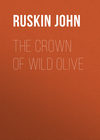









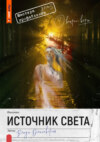
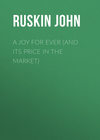


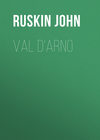
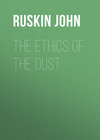


![Stones of Venice [introductions]](https://cdn.litres.ru/pub/c/cover_100/34843654.jpg)
